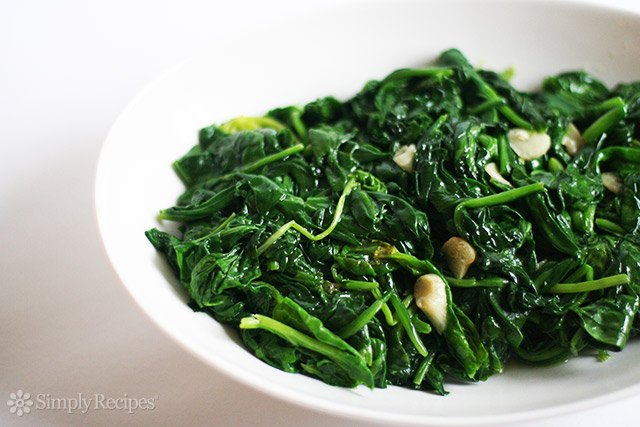Bulking On A Budget
Mục Lục
by Ben Brewster
One of the biggest misconceptions about weight gain is that it has to drain your wallet. It’s more food, right? In what world would this not cost more? Several athletes, over the years, have complained they’re spending $25 or even $30 a day on food – twice as much as before they began working with us and we gave them much more robust calorie and macronutrient recommendations. In light of this myth that won’t seem to die, I thought I’d put together a list of rules and guidelines for bulking on a budget. For me, bulking has always been very comparable to maintenance or fat loss in terms of cost, so let’s dive into why your cost complaints are just an excuse!

—
1. Think in terms of macros and calories, not meals
The goal of a weight gain diet is to keep you in a caloric surplus and maximize the proportion of muscle to fat gained. While this ratio is dependent on more than just diet, the level of calorie surplus and the macronutrient breakdown are two of the most important nutritional components to be aware of.
Rather than just trying to double the number of meals eaten or follow a vague “see food” diet, take a calculated approach. This will allow you to better choose foods that fit your protocol and make informed adjustments as you go. It’s amazing how easy it becomes to manipulate your weight when you become aware of the calorie and macronutrient content of the food you’re putting into your body.
—
2. Avoid the “dirty” bulk
Adding on to the last point, the goal is adding muscle mass, not mass. While a proportion of fat mass is inevitable (and among advanced athletes, will actually make up a large percentage of weight gained during mini bulks), there is a tendency to get overzealous and think that if 4,000 calories is good, 6,000 calories will be better.
Two problems with this philosophy – first, it becomes unsustainable and actually reduces the chances the athlete will actually follow through on the plan by force-feeding and jumping into massive intakes all at once. (Not great for sustained progress!) Second, your body has a maximal rate of protein synthesis under normal training conditions, so even a novice isn’t going to build 10 pounds of muscle in a month. Shooting for extreme intakes will help an athlete build muscle by ensuring a consistent calorie surplus, but it just leads to an unnecessarily large amount of fat at the tail end that must then be shed (and this ratio of muscle-to-fat gain actually worsens the fatter you get, which is why I recommend getting relatively lean before bulking).
Getting in the right degree of calorie surplus will save money unnecessarily spent on excessive intakes. Typically, this means shooting for an intake that leads to about 1 lb of weight gain per week.
—
3. Limit eating out
This is the most important recommendation for bulking on a budget and what our athletes in the intro were doing – even if you choose relatively cheap restaurants like Chipotle, this adds up to a massive grocery bill each month. Learning the basics of cooking is essential to be able to implement this step – you don’t need to be Martha Stewart to know how to whip up some rice, pasta, meat or frozen veggies, but there are a shocking number of guys in high school and even college who have never cooked a damn thing in their life, because the first thing that cooked looked like this:

If this is your idea of grilled cheese, we’ve got some work to do.
—
I’m not saying to never go out to eat, but to establish a budget if money is tight, and when you do go out, try to pick options that maximize the number of quality calories per dollar. Also, consider meal prepping if time is an issue, as it will save you a ton over the course of the month. For value, you can’t beat Chipotle (or its inferior cousins, Q’doba and Moe’s). Here’s how to get the most out of it for fat loss or bulking:
—
4. Don’t over consume protein
Protein is notoriously the most expensive macronutrient per calorie and is going to make up the bulk of your grocery bill year round. It’s a crucial macronutrient for building muscle, but consuming 400 grams of protein a day is doing nothing for you besides doubling your grocery bill and giving you egg farts.
Stick to around 1 gram of protein per day per lb of bodyweight (200g for a 200 lb male). Definitely don’t fall too short of this range, but there isn’t much use in going above either when it comes to bulking.
Here’s the other kicker – you’ll be consuming much more protein as a byproduct of the increased quantities of pasta, nuts, legumes, etc. which drops the meat/dairy requirements even further, often saving money when bulking compared to cutting.
I’d recommend staying under $4/lb for meat (and shooting for under $2.50/lb for chicken).
—
5. Cents for carbs
Carbs are where you’ll be consuming the bulk of your calories from – which is good news because they’re dirt-cheap. Rice, pasta and potatoes have stood the test of time – and doubling your carb intake represents only a fractional increase in your grocery bill.
—
6. Take advantage of healthy fats
The great thing about fats, for bulking, is that they’re the most calorie dense micronutrient by far. Compared to 4 calories per gram of carb or protein, fat contains 9 delicious calories per gram. Those 3 spoonfuls of peanut butter that makes a dangerous snack on a fat loss diet, just became a 600 calorie weight gain bomb that’ll cost you under $1.00. It’s also inexpensive to buy healthy oils, like avocado or olive oil in bulk, and cook your potatoes, meat, etc. in them. You can even add light tasting olive oil to your smoothies (2 tbsp only costs about 30-40 cents, but packs 240 calories).
—
7. Eat minimally filling veggies
While veggies are awesome for fat loss because, in general, they are highly filling, this is the opposite of what we want when trying to cram 4,000+ calories down our throats. This doesn’t mean to totally ignore the value of veggies, but it does mean to not over consume them when bulking and to pick less filling options when you do. My favorite option? A couple handfuls of spinach, cooked in olive, or avocado oil, which cooks down to 1-2 bites worth and takes up a fraction of the space in your stomach compared to many other veggies. Spinach also goes great in smoothies or omelets for you rebels out there who refuse to eat it like this:
—
8. Buy in bulk
This is an obvious one, but you can find the best deals at Sam’s Club or Costco. Stock up and save – and make sure to hit each of the free samples a few times over.

—
9. Substitute higher calorie variations of what you already eat
It’s quite simple to substitute out your regular food items for the higher fat (and higher calorie) options for periods of weight gain. Switch out 2% milk for whole milk. Drop from 96% lean ground beef to 85-90%. Take those 50 calorie fat-loss friendly tortillas and get the 200+ calorie ones instead.
These simple substitutions have the double benefit of saving your wallet and making it so you minimize the amount of force-feeding, if any, you’ll be doing.
You can create 1,000+ calorie jumps in your daily intake without adding additional meals or changing the quantity of food that you’re eating.
Read that again… because it’s the reason our athletes are able to sustain higher intakes – it typically barely feels like they’re “bulking,” except for the fact that the scale is going up every week!
—
Putting it all together: a 5,000-calorie day for less than $10
The point of this example is not to show you have to eat 5,000 calories to gain weight (which often is excessive), it’s to show that even with an extreme intake, eating for <$10 is still quite possible.
Target Macros: Fat – 180g, Carbs – 625g, Protein – 220g, Calories – 5,000
Here’s a sample day of eating that gets pretty damn close to these macros with calories and price included.
Breakfast (1,530 calories): Cheese Omelette and peanut butter toast
> 4 egg omelette with 2/3 cup shredded cheese and 2 cups spinach
> 3 slices of multigrain toast covered in 4 tbsp natural peanut butter
> 2 cups whole milk
Lunch (1,750 calories): Chicken and rice burritos
> 1 cup rice (dry measure) with 2 tbsp coconut oil mixed in
> 8 oz. grilled chicken breast, chopped
> 3 large flour tortillas
Dinner (1,330 calories): Pasta with meat sauce
> 8 oz. whole grain pasta
> 15 oz. tomato sauce
> 6oz ground beef, 85% lean
Anytime Snack (380 calories): 2 granola bars
Final macros: Fat – 178g, Carbs – 613g, Protein – 228g, Calories – 4,990
Price Breakdown:
$0.67 for 4 eggs
$0.70 for 4 tbsp natural peanut butter
$0.30 for 3 slice of multigrain bread
$0.28 for 2/3 cup of shredded cheese
$0.25 for 2 cups whole milk
$0.22 for 2 cups spinach (raw measure)
$0.56 for 1 cup of rice
$0.42 for 2 tbsp coconut oil
$1.00 for 8oz chicken breast
$0.84 for 3 tortillas
$0.69 for 8oz pasta
$0.50 for half can of tomato sauce
$1.45 for 6 oz. ground beef
$0.84 for 2 granola bar servings
Grand Total: $8.72
The best part about this is that there’s still wiggle some room left over for basic supplementation, additional veggies, etc., or eating out for 8 bucks 5 times per month, all while still staying around the $10/day mark.
Ingredients / Shopping List:
> Rice – a 20 lb bag is about 45 cups of rice (dry measure) and ranges from $17-$30. We picked $25 for this estimate.
> Coconut oil – I found 54 oz. (107 tbsp) for about 22 bucks here.
> Eggs – $2/dozen is realistic price if you buy in bulk.
> Peanut Butter – bought in bulk, you can get 75 2 tbsp servings for about 25 bucks.
> Multigrain Bread – Under $1.50 per 15–slice Pick higher calorie bread (>100 calories per slice).
> Shredded Cheese – under 5 bucks for a 2-pound bag of shredded cheese.
> Whole milk – $2/gallon isn’t too hard to find.
> Whole Grain Pasta – $1.38 per pound is cheap. Regular pasta can dip well below $1 to save even more.
> Tomato Sauce – 29 ounces for under $1. Can’t beat that.
> Large Flour Tortillas – 16 large tortillas for $4.38
> Ground Beef – under $4/lb isn’t too hard to find.
> Chicken Breast – $2/lb in bulk makes this one of the cheapest protein options.
> Granola Bar – $5 per 12 pack (2 pars per pack).
> Spinach – under $2 for a 10oz bag, which gives you about 7 2-cup servings.
—
Conclusion:
Gaining weight, even for the hardest of hard-gainers, doesn’t have to break the bank or require the type of force feeding often associated with successful bulks. Follow the guidelines laid out in this article, apply a smidgen of consistency, and train like a savage in the weight room on a smart program that addresses your individual limitations.
Now it’s time to get back to work.
—
Questions or comments? Leave your thoughts below, or email us at [email protected]















![Toni Kroos là ai? [ sự thật về tiểu sử đầy đủ Toni Kroos ]](https://evbn.org/wp-content/uploads/New-Project-6635-1671934592.jpg)


